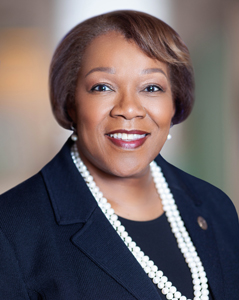How Predominantly Black Institutions Contribute To Students’ Success
Marybeth Gasman, Contributor

President Z Scott
Chicago State University |
Predominantly Black Institutions serve as critical lifelines for many students who might otherwise face barriers to attending college. These colleges and universities, which have at least 40% Black students (and 50% low-income students), play a vital role in advancing educational equity by offering culturally responsive teaching, fostering community engagement, and promoting upward mobility for Black, low-income students, and many other students. To learn more about PBIs, I recently talked with Zaldwaynaka “Z” Scott, president of Chicago State University in Illinois, and Falecia D. Williams, president of Prince George’s Community College in Maryland.
To begin, I asked both presidents how PBIs uniquely address their students' educational and social needs. According to Scott, “At Chicago State University, we are a high-access institution, and we are proud of that. As the most affordable public institution in Chicago, we enable our students to earn their bachelor’s degree and beyond, become diverse leaders in their field, and earn a family-sustaining income in their career, helping to change their family’s trajectory. That is why CSU ranks in the top 4% of colleges and universities in the United States for economic and social mobility.”
CSU’s student body is 76% Black, an average age of 29, and 89% receive Pell Grants. Acknowledging the significant needs of CSU students, Scott emphasized that “they are students with great drive.” Furthermore, CSU boasts a highly diverse faculty, with faculty of color representing 70%. This diversity enables students to see themselves as leaders in the classroom and beyond.
Similarly, PGCC takes a holistic approach to student support. Williams explained that the institution’s PBI Grant “focuses on systemically scaling retention-based services that address the unique needs of Black students. Unlike other institutions, PGCC goes beyond academic resources by prioritizing social and emotional support.” She shared that initiatives funded by the PBI program, such as the Owl Market food pantry, “ensure that students have access to essential resources like 75 grocery items weekly, reducing financial stress and allowing them to focus on their education.”
Given the financial constraints many under-resourced institutions encounter, I asked both leaders about the specific challenges PBIs face regarding funding, resources, and public awareness. Scott identified several key challenges, stating, “Regarding institutional support, PBIs were designated as such in 2007 under the College Cost Reduction and Access Act, with the goal of expanding access to critical federal grants. These grants are critical to our operations and have allowed millions of students to reach their career goals. In FY24, Congress appropriated $22.4M to PBI formula grants, which is $112k over FY23. The PBI Congressional Caucus has advocated for an increase to $25M, a 9% increase.” She stressed, “Funding for our schools should be apolitical and nonpartisan.”
Beyond funding challenges, Scott pointed out a common misconception: “Many are unaware of the difference between our unique federal designation as a PBI and the designation of [Historically Black Colleges and Universities] HBCUs. They are two separate designations, and oftentimes, we’ve encountered those who mistake CSU for an HBCU when we are a PBI.

 All Rights Reserved
All Rights Reserved